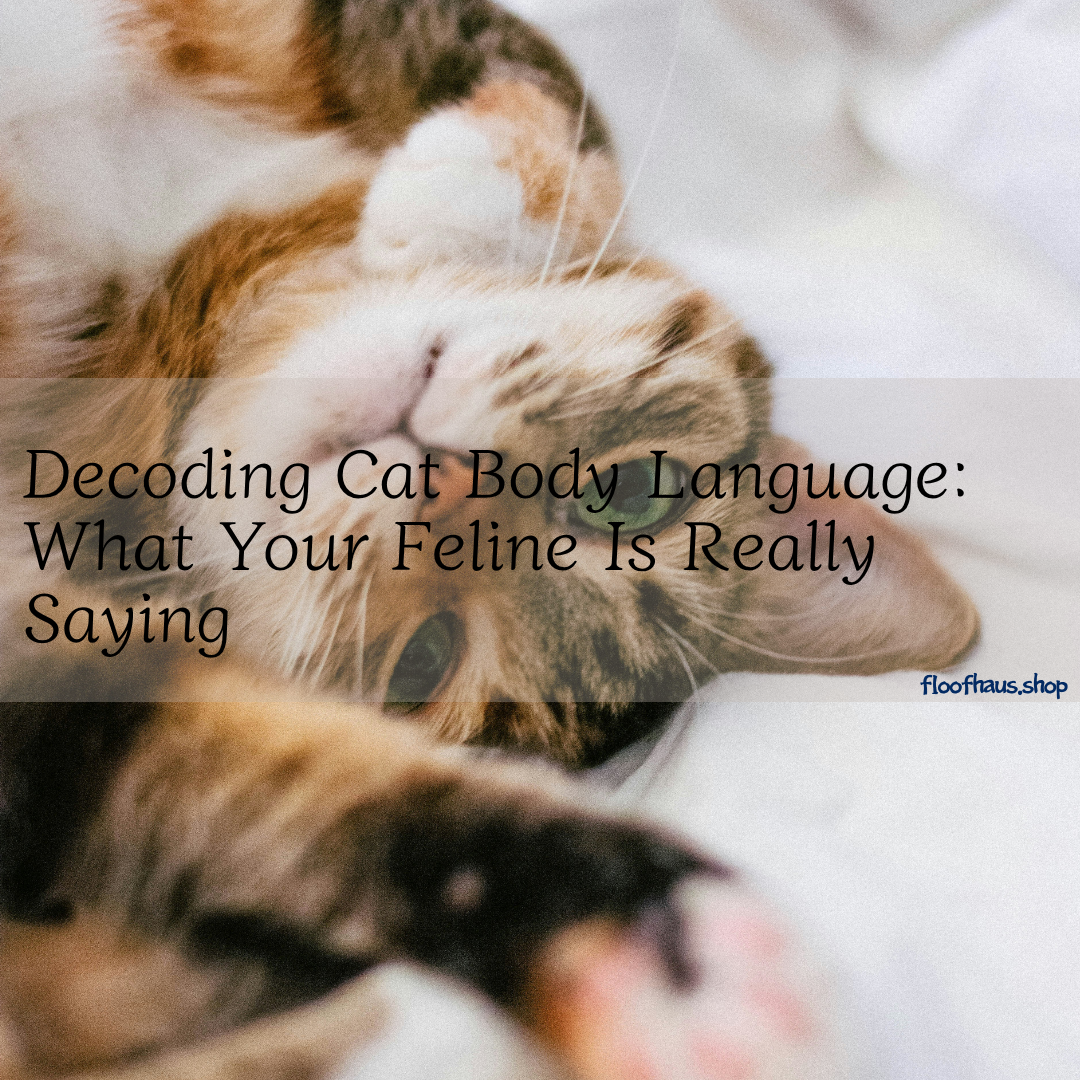
Decoding Cat Body Language: What Your Feline Is Really Saying
Share

Why understanding cat body language matters
Cats are mysterious creatures. They rely on subtle movements, postures, and expressions to share how they feel. Learning to read cat body language helps you recognize when your cat is relaxed, playful, stressed, or fearful.
Unlike dogs, cats rarely express emotion openly. Their communication depends on tail movements, ear position, and eye contact. Recognizing these signs can prevent misunderstandings and make your cat feel safer around you.
The tail: your cat’s emotional signal
A cat’s tail is one of the clearest indicators of mood. When held upright, it shows confidence and friendliness. A curved tail often means your cat feels happy and relaxed.
If the tail puffs up, it signals fear or aggression. A low, tucked tail means your cat is scared or anxious. A flicking tail usually shows irritation — your cat may be warning you to back off.
Watching the tail’s motion helps you adjust your behavior. You’ll know when to play, pet, or simply give your cat space.
Eyes that speak volumes
A cat’s eyes reveal emotion and intent. Slow blinking means your cat trusts you. It’s often called a “cat kiss.” You can return the gesture by slowly blinking back.
Wide pupils may mean excitement or fear. Narrow pupils suggest focus or aggression. If your cat stares at you without blinking, it could be showing dominance or curiosity.
Avoid direct staring for too long — it can feel threatening to some cats. Instead, use gentle glances to show calmness and reassurance.
Ear position and what it tells you
Ears play a huge role in expressing emotion. Forward-facing ears signal interest or playfulness. Sideways ears often show uncertainty or mild irritation.
When ears flatten against the head, your cat feels threatened or angry. It’s best to give them space until they calm down. Rotating ears indicate alertness — your cat is tracking sounds in the environment.
By paying attention to ear movement, you can predict how your cat might react next.
Posture and movement cues
Your cat’s posture tells you a lot about their emotional state. A relaxed cat lies with paws tucked or stretched out comfortably. An arched back with fur standing up means fear or aggression.
Rolling onto the back can mean two things: trust or a defensive stance. If the belly is exposed but the tail flicks, don’t touch — it’s a warning. But if the cat purrs and stretches calmly, it’s showing comfort and confidence.
When your cat rubs against you, it’s marking you as safe. That’s an affectionate gesture, not just attention-seeking.
Vocal expressions and sounds
While body language is key, vocalizations support it. Cats meow, chirp, purr, and hiss to communicate mood and needs.
- Meowing: Often used to get human attention.
- Purring: Usually signals comfort but can also appear when in pain.
- Hissing: Clear sign of fear or anger.
- Chirping or trilling: Friendly greeting or excitement.
Understanding the context of these sounds enhances your ability to interpret what your cat wants.
The importance of whiskers
Whiskers act as sensory tools. When relaxed, they sit outward naturally. And when pointed forward, your cat is curious or excited. When pulled back tightly, it may feel threatened.
Touching whiskers repeatedly can stress cats, so handle their faces gently. Whisker position adds another layer of meaning to overall cat body language.
Recognizing stress and anxiety
Stress in cats often shows up through subtle signs: crouched posture, tail tucked, ears flattened, or rapid grooming. Overgrooming, hiding, and lack of appetite can also indicate anxiety.
Triggers may include loud noises, new people, or sudden changes in environment. Creating calm spaces, using pheromone diffusers, and keeping routines consistent can ease anxiety.
Reading early warning signs prevents behavioral issues and keeps your cat emotionally balanced.
Building trust through awareness
Understanding cat body language helps you create positive interactions. Respecting your cat’s comfort level teaches them to trust you more deeply.
Never force touch or play when they’re tense. Let them approach first. Speak softly, blink slowly, and move calmly. Over time, they’ll see you as a source of safety.
When your cat knows you understand their cues, they’ll reward you with affection, confidence, and loyalty.
Floofhaus supports feline comfort
At Floofhaus, we know every flick of a tail tells a story. Our products are designed to enhance comfort and emotional well-being — from calming cat beds to cozy blankets and enriching toys.
By supporting natural behaviors and promoting relaxation, Floofhaus helps your cat feel secure and loved. Because communication begins with understanding, and every purr deserves comfort.
Final thoughts
Your cat’s behavior is never random. Every movement, glance, and gesture has meaning. Learning to interpret cat body language transforms your relationship, creating trust and harmony at home.
Pay attention to patterns, respond with patience, and celebrate your cat’s unique way of communicating. The more you listen to their silent language, the stronger your bond becomes.
